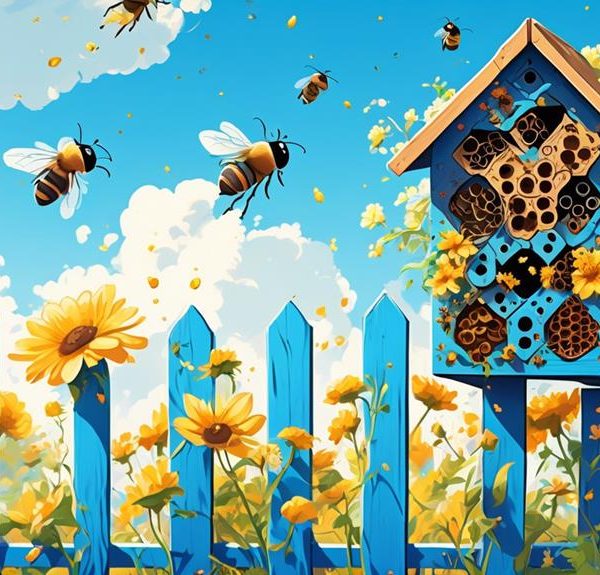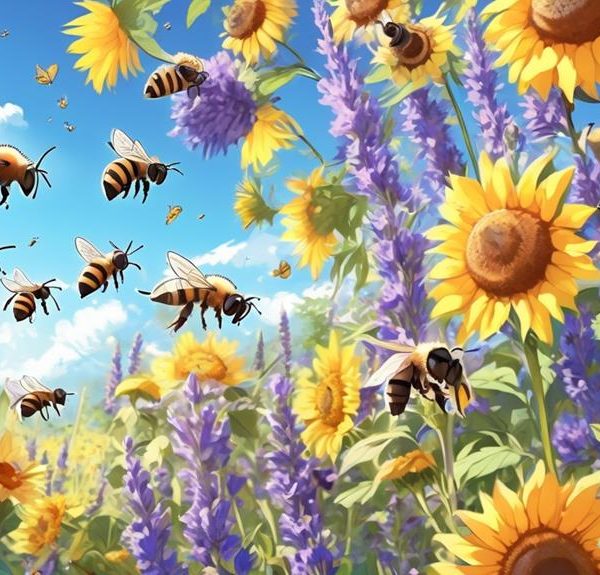Gain insight into the fascinating color preferences of Mason bees and how this knowledge can enhance your gardening experience.
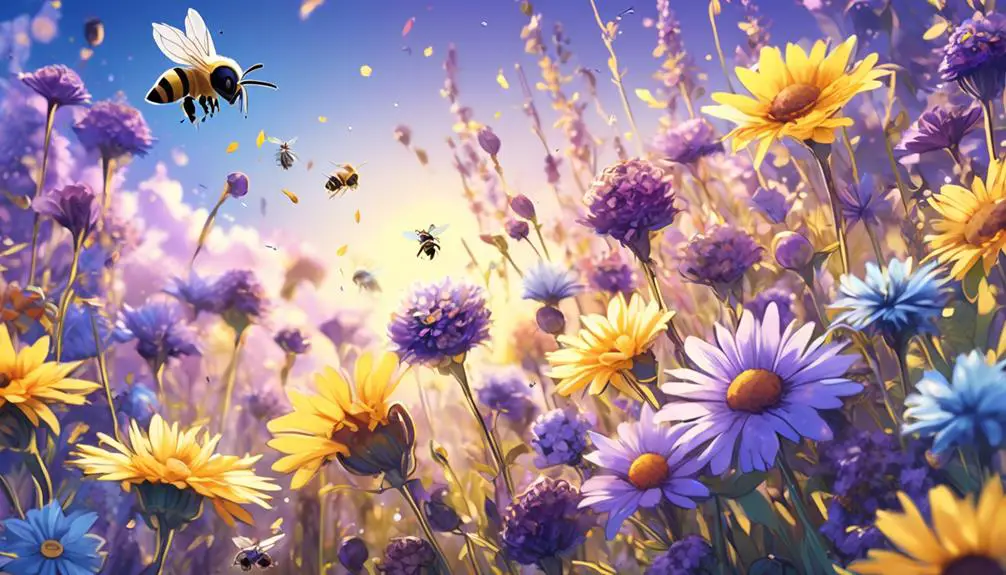
What Colors Do Mason Bees Like?
By some strange coincidence, you've probably noticed that certain colors in your garden seem to attract more bees than others. Now, you're wondering why that is. Well, you're not alone in this curiosity.
Many gardeners and scientists have taken an interest in understanding the color preferences of bees, especially Mason bees. As it turns out, these little creatures have their own color preferences that play a significant role in their daily lives.
But how exactly does color affect these bees, and, more importantly, how can you use this knowledge to your advantage in your own garden? You'll find out soon enough.
Key Takeaways
- Mason bees see colors in the ultraviolet spectrum and prefer colors on the blue and violet spectrum.
- Blue and violet flowers are rich in nectar and attract Mason bees due to their color.
- Mason bees are attracted to patterns that contrast with their preferred colors.
- Incorporating plants that bloom in blue, violet, and purple colors can attract Mason bees to your garden.
Understanding Mason Bees' Color Preferences
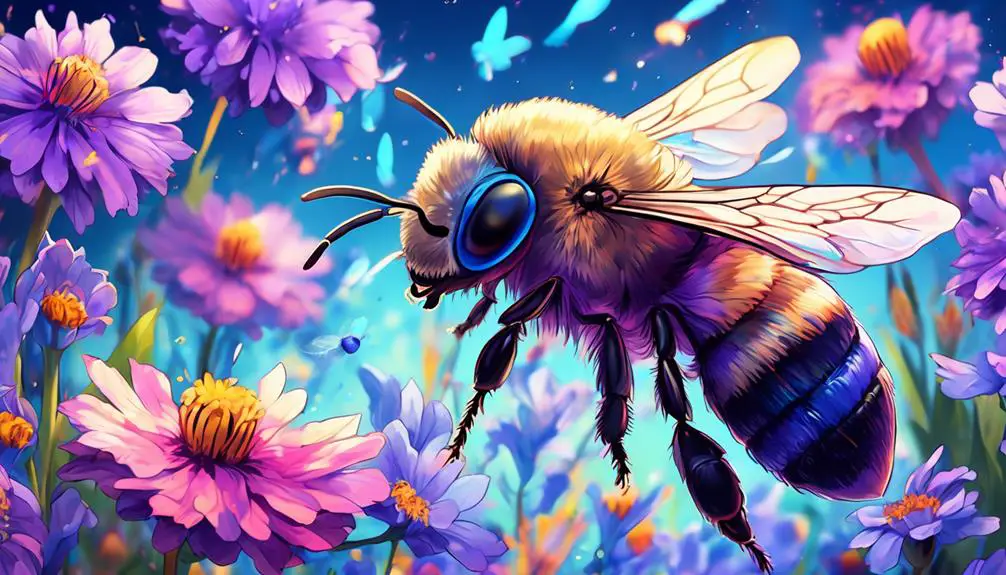
To understand Mason bees' color preferences, you'll delve into the fascinating science behind their visual perception. Unlike humans, Mason bees see colors in the ultraviolet spectrum, which significantly impacts their flower choice.
Before we delve deeper, it's vital to grasp a basic understanding of how these bees' eyes work. Mason bees have compound eyes, an arrangement that allows them to detect polarized light, a feature invisible to the human eye. This enhanced perception assists them in navigating their environment and locating nectar-rich flowers.
Now, let's consider their color predilections. Studies suggest that these bees prefer colors on the blue and violet spectrum. This color preference is rooted in their survival instinct. Blue and violet flowers are often rich in nectar, providing the bees with the energy they need to continue their pollination work.
However, it's not just about the color. Mason bees are also attracted to patterns, specifically those that contrast with their preferred colors. This combination of color and pattern preference ensures that they can effectively locate and collect nectar, playing a critical role in their survival and the continuation of their species.
The Science Behind Bees and Colors
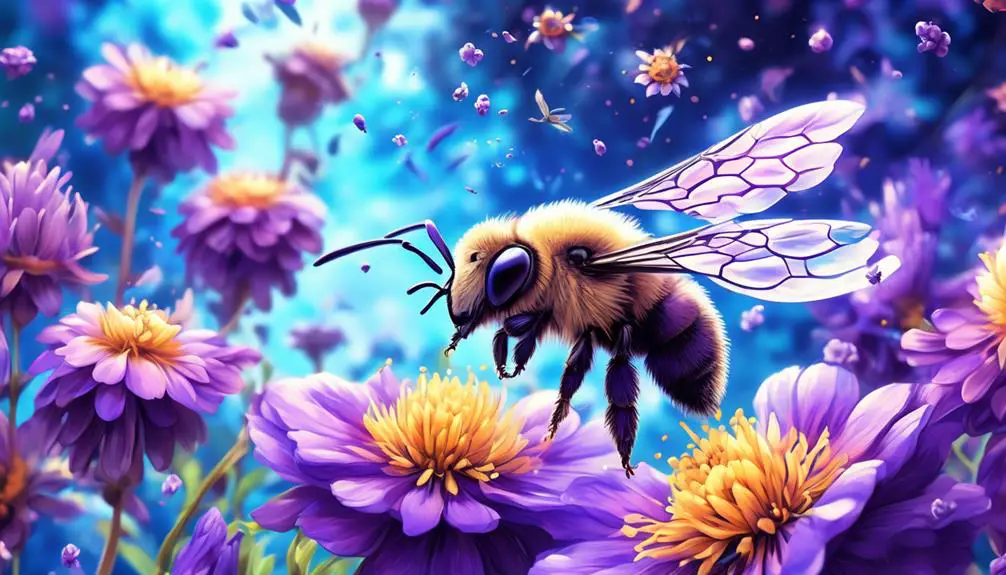
While you might find it surprising, the science behind bees' color perception is truly fascinating, shedding light on their unique survival strategies. Bees, including Mason bees, don't perceive colors the same way we do. Rather than seeing the full range of color, they perceive the world in ultraviolet light, blue, and green. This means they're attracted to plants that reflect these colors, which often indicate nectar-rich flowers.
The reason for this unique vision lies in bees' evolutionary adaptation. It's shaped by their need for efficient foraging. By being tuned into these specific colors, bees can quickly locate and gather nectar, enhancing their survival and reproductive success.
Now you're probably wondering, how does this color perception influence Mason bees' preferences? Research suggests that these bees have a particular fondness for blue and violet flowers. This is likely because such colors are more visible to them in the natural environment, hence making their nectar-collecting task easier. So, understanding this color preference isn't just intriguing, it's also crucial for conserving these beneficial pollinators.
Colors to Attract Mason Bees
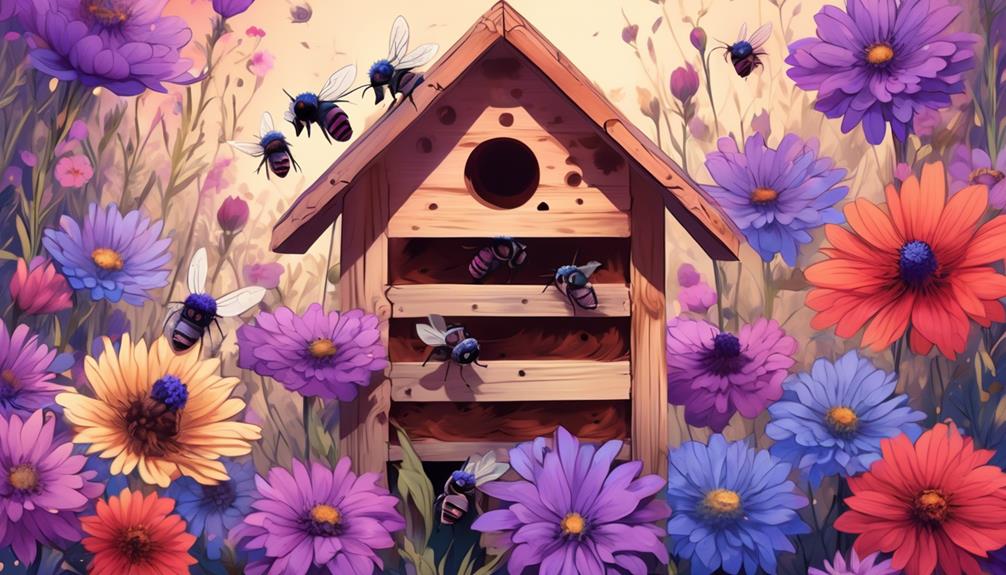
If you're looking to attract Mason bees to your garden, understanding their color preferences and planting accordingly can significantly increase your chances of success. These bees are particularly partial to colors that fall within the blue, violet, and purple spectrum. While they're capable of seeing ultraviolet light and some green hues, their attraction to the cooler end of the color spectrum is a result of their specific visual spectrum.
To maximize your success, you'll want to select plant varieties that not only bloom in these colors but also have a high nectar production, as Mason bees are nectar feeders. Examples include lavender, salvia, and violets, which are all rich in nectar and fall within the preferred color range. Additionally, consider incorporating plants that bloom at different times throughout the season to provide a continuous source of food.
Remember, it's not just about the flowers. Mason bees are also attracted to nesting materials that are dark in color. Providing a nesting habitat with dark-colored tubes or tunnels can further entice these industrious pollinators.
With careful planning, you can create a garden that's not only visually appealing but also a magnet for Mason bees.
Using Color in Your Garden
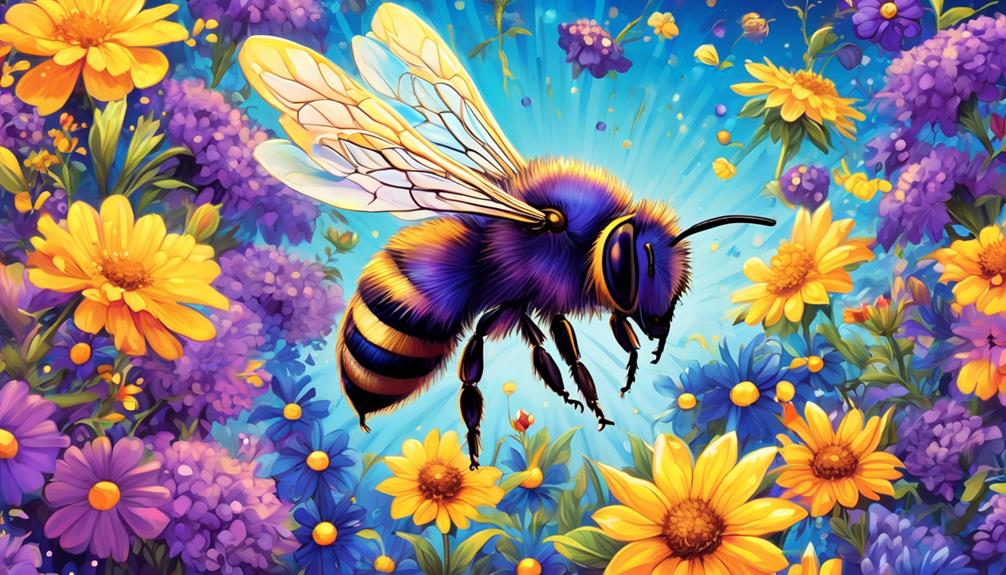
Harnessing the power of color in your garden goes beyond simply attracting Mason bees; it also involves strategic planning and understanding the perceptual impacts of different hues on various pollinators. Research shows that bees, including Mason bees, are most attracted to blue, purple, and yellow flowers. They perceive these colors more vividly than others, hence boosting their pollination activities.
To maximize your garden's potential, you'll want to strategically incorporate these colors. Here's a helpful table to guide you:
Color | Flowers | Pollinators |
|---|---|---|
Blue | Salvia, Lobelia | Mason bees, Bumblebees |
Purple | Lavender, Verbena | Mason bees, Butterflies |
Yellow | Sunflowers, Daisies | Mason bees, Honey bees |
Case Study: Successful Mason Bee Gardens
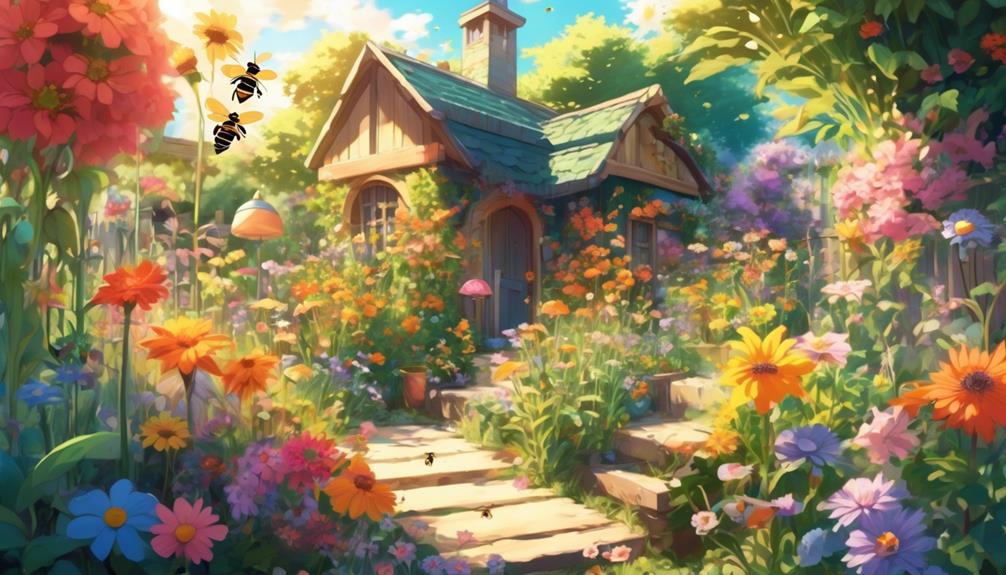
Let's examine a few successful Mason Bee gardens to understand the color schemes, flower types, and strategies they employ to attract these vital pollinators.
In Portland, Oregon, a garden featuring a mix of blue, purple, and yellow flowers, such as lavender, sunflowers, and blueberries, has seen a significant increase in Mason Bee activity. Research indicates that these colors are highly attractive to Mason Bees, suggesting their visual perception is tuned to these colors.
Consider another case in Vancouver, Canada. Here, a garden with predominantly white and yellow flowers, like daisies, and goldenrods, also noted increased Mason Bee presence. This supports the notion that Mason Bees are drawn to lighter, brighter colors.
In both scenarios, the gardeners provided nesting materials such as hollow reeds and wood blocks, essential for Mason Bee reproduction. Noticeably, they placed these materials near the vibrant flowers, creating a convenient location for bees to forage and nest.
Conclusion
So, you've caught the mason bee buzz! With a penchant for blues, purples, and yellows, these bees have clear color preferences. By incorporating these hues in your garden, you're more likely to attract these pollinators.
Remember, it's not just about the colors, but about the plants themselves. Choose bee-friendly varieties to create a haven for mason bees.
With science on your side, you're well on your way to creating a thriving mason bee garden.

